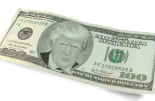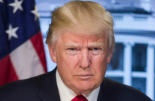Han Dieperink: Bessonomics
Han Dieperink: Bessonomics

This column was originally written in Dutch. This is an English translation.
By Han Dieperink, written in a personal capacity
With the appointment of Scott Bessent as Treasury secretary in the Trump II administration, the supply-side economics of the early 1980s are back. Where Trump stands for lower taxes and deregulation, Bessent brings in fiscal discipline and lower inflation. Low inflation is also important for Trump if the Republicans want to retain the majority in the mid-term elections. Those are already a year and 10 months away.
Bessent earlier launched the 3-3-3 plan: a budget deficit of no more than 3% and economic growth of 3%, made possible by the production of 3 million extra barrels of US oil per day.
Bessent's plan seems to be frustrated by Trump's statements at Davos, interfering with Fed chairman Jerome Powell's monetary policy. Trump would like to see lower interest rates. Still, lower interest rates do fit within Bessent's plan. If Bessent commits to a maximum budget deficit of 3%, it will have a dampening effect on the US economy. After all, the budget deficit is currently around 6.5% of GDP. Such a fiscally tightening policy should be offset by a more accommodative monetary policy.
Moreover, the capital market will also appreciate better fiscal discipline. Indeed, the implication is that if real interest rates remain below 3% at 3% real growth, US debt as a percentage of nominal GDP will shrink. For convenience, assume an inflation premium of 2%. Then a nominal growth rate of 5% overall is feasible. As long as nominal interest rates remain below that, US debt shrinks as a percentage of GDP. Given the gloomy forecasts on the development of US government debt, something like this is a game-changer.
A weaker dollar
While Trump threatens to go full steam ahead with import tariffs, Bessent prefers to see a weaker dollar. After all, that improves US competitiveness and reduces the trade deficit. Higher import tariffs can be seen as an additional burden on US consumers. While some see this as a development that causes higher inflation, experience with the high import tariffs of the 1930s shows that they mostly lead to recessions and thus deflation.
More likely, Trump is using import tariffs to strike bilateral deals, as he did last week with Colombia, and not to increase the burden on US consumers. The tricky thing for investors is that Trump's counterpart must realise that it is not a bluff. If import tariffs are convincing as a threat, financial markets are also likely to take them seriously. However, if neither side takes the threat seriously, there is nothing left for Trump to do but actually raise tariffs. That, after all, is the ‘art of the deal’.
Inflation in the US will be further depressed if more US oil is produced. Currently, 60% of crude oil comes from Canada, and then import tariffs obviously do not help. Bessent is obviously not the only administration in Trump's cabinet, but he does have Trump's economic advisers and, of course, Powell on his side.
US competitiveness plus liquidity boost
Such a change in US policy direction also has important implications for the US dollar. As a reserve currency, the dollar is a special currency. When the US economy is doing well, the dollar is strong, but it also remains powerful in times of crisis. The latter is due to the dollar's role as a safe haven. In between, however, the dollar's economic fundamentals emerge. If there is loose monetary policy and tight fiscal policy, a weaker dollar seems inevitable.
A weaker dollar is not only good for US competitiveness but also provides a liquidity boost to the rest of the world. In that respect, the Federal Reserve may still be seen as the world's central banker. A weak dollar also increases the likelihood that assets outside the United States will perform better. There is then a good chance that the long period of outperformance of US equities will come to an end. Given the valuation differential, the potential is high.
Competition for the Magnificent Seven
Yet this valuation gap is also there within the United States. For instance, stocks outside the Magnificent Seven are much cheaper. Cheaper even than the historical US valuation average. The chances of the S&P 493 outperforming the Magnificent Sevenincreased last week thanks to the introduction of DeepSeek. Indeed, the Magnificent Seven ‘s valuation is partly based on a unique monopoly position, with the deep pockets of these megacaps providing a competitive advantage when investing in data centres. Competition always reduces costs.
On the one hand, shares in the Magnificent Seven will also benefit from the broadening of the artificial intelligence market. On the other hand, they will thereby lose their monopoly premium. For the US economy, what matters most is stronger productivity growth. This will make it even easier for Bessent to achieve its 3% growth target.
The combination of high productivity growth and the return of supply-side economics (better known as Reaganomics) creates a uniquely favourable economic period, something we have not seen since the 1920s. If Bessent succeeds in this, it may rightly be labelled ‘Bessonomics’.








